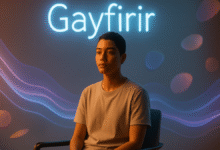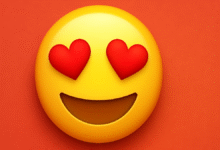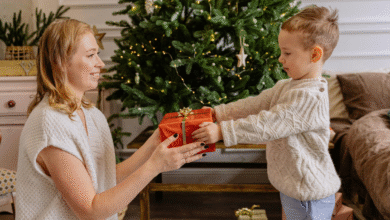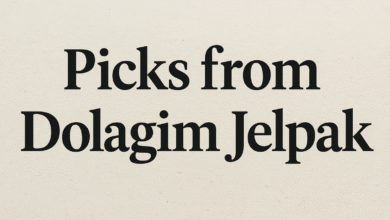Heart Eyes Emoji: The Complete Guide to Its Meaning, Use, and Influence
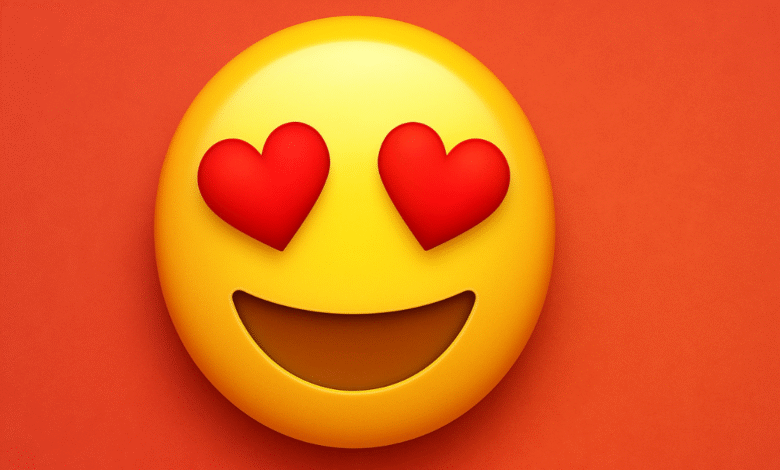
Discover the meaning, history, and cultural impact of the heart eyes emoji. Learn how to use it in chats, social media, and marketing to express love, admiration, and excitement.
Introduction: Why the Heart Eyes Emoji is Everywhere
The heart eyes emoji has become one of the most recognizable symbols in digital conversations. Whether you’re reacting to a friend’s new outfit, a delicious food photo, or even a motivational post, the heart eyes emoji instantly communicates admiration and affection without saying a word.
What makes the heart eyes emoji special is its universal appeal. Unlike some emojis that have confusing or culture-specific meanings, this one is simple: it’s about love, joy, and overwhelming appreciation. But behind its simplicity, there’s an entire world of history, psychology, and creative use that has made it a staple of online communication.
The Origin of the Heart Eyes Emoji
When emojis were first introduced in Japan during the late 1990s, they were small, pixelated characters designed to add emotion to otherwise plain text messages. Among these early emojis was the concept of hearts, but the combination of facial expressions with hearts in the eyes didn’t appear until later.
The modern heart eyes emoji, officially known as “Smiling Face With Heart-Eyes,” was added to the Unicode Standard in 2010. Its rise coincided with the boom of smartphones and social media, where users wanted quick ways to show enthusiasm and affection without writing long messages. From there, it spread like wildfire, finding its place in memes, marketing campaigns, and even everyday business communication.
The reason it resonated so strongly is because humans are wired to respond to faces and emotions. By combining a joyful smile with exaggerated heart eyes, the emoji taps directly into our instinctive reactions. It doesn’t just look like love — it feels like it.
What the Heart Eyes Emoji Really Means
At its core, the heart eyes emoji represents love, admiration, or being “in awe” of something. But context is everything. Sending it to a romantic partner conveys affection, while using it on a friend’s vacation photo shows admiration. On a post about food, it expresses how much you’d love to try that dish.
The flexibility of the heart eyes emoji is what gives it such staying power. Unlike words, which can sometimes sound awkward or over the top, this emoji softens the message. It turns what might feel like exaggeration into playful excitement.
Another reason it works so well is because it bridges the gap between casual and meaningful. You can use it lightly with friends or seriously in a relationship, and both interpretations feel natural. This versatility is rare in digital communication, where tone often gets lost.
Cultural Impact of the Heart Eyes Emoji
The heart eyes emoji has transcended text messages. It shows up in memes, on clothing, in advertisements, and even in pop culture references. Brands use it in marketing campaigns to show authenticity, while influencers rely on it to create quick, emotional connections with followers.
One fascinating aspect is how it has become a visual shorthand. Instead of writing “I love this so much,” users can simply drop a heart eyes emoji, and the message is instantly clear. This kind of efficiency reflects how communication has evolved in the digital age — faster, more visual, and more emotionally charged.
Additionally, the emoji has been studied by linguists and psychologists as an example of how humans adapt language to new mediums. Emojis act as emotional punctuation, and the heart eyes emoji, in particular, functions almost like an exclamation point of love or admiration.
How to Use the Heart Eyes Emoji Effectively
In Friendships and Social Media
Using the heart eyes emoji in friendly conversations is one of the most common practices. Whether you’re commenting on a friend’s new haircut or reacting to a funny post, it shows enthusiasm without needing a long reply. It has become a form of digital applause — quick, clear, and supportive.
On platforms like Instagram, TikTok, and Twitter, the heart eyes emoji is practically a social currency. Commenting with it boosts engagement while also strengthening relationships. It’s short, but it still carries weight because it reflects genuine appreciation.
In Romantic Relationships
When it comes to romance, the heart eyes emoji can be both playful and deeply meaningful. Sending it to a partner says, “I adore you,” without needing a full sentence. It works especially well in flirty or affectionate messages because it’s casual but still impactful.
Couples often combine the heart eyes emoji with others, like the red heart or kissing face, to create a layered emotional message. This playful use of emoji “language” adds personality to digital conversations and helps keep relationships vibrant in an online setting.
Heart Eyes Emoji in Marketing and Branding
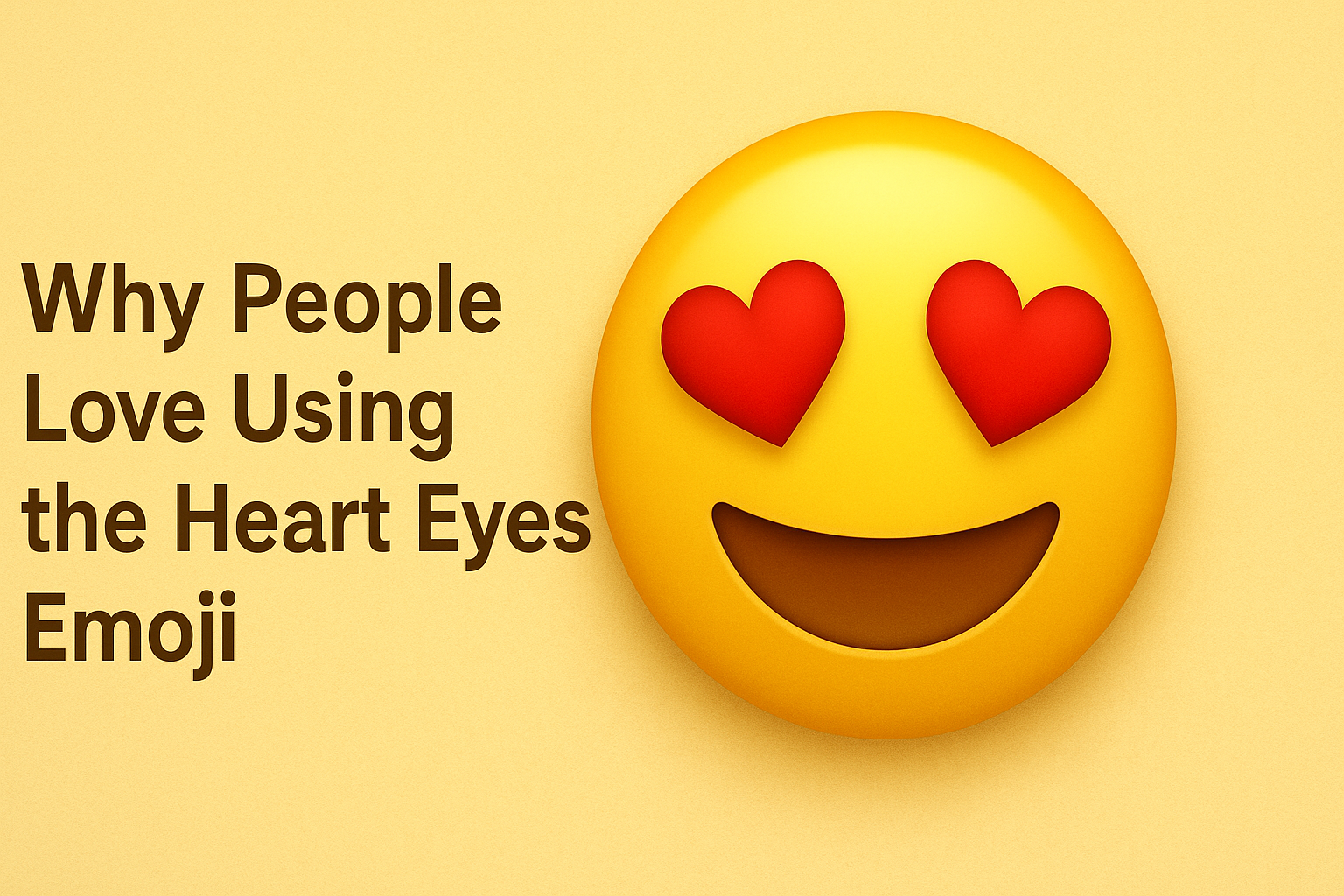
The heart eyes emoji has also found a place in the professional world. Brands use it to humanize their messaging and connect with audiences on a more emotional level. A simple post featuring the heart eyes emoji can turn a product launch into something that feels exciting and personal.
For example, food brands often pair mouthwatering images with the heart eyes emoji to trigger cravings. Fashion retailers use it when showcasing new arrivals, encouraging customers to “fall in love” with products. By doing this, companies tap into the universal language of admiration, making their campaigns more relatable and engaging.
In marketing, the key is balance. Overusing the emoji can make a message feel forced, but when used sparingly, it enhances authenticity and resonates with audiences. It shows that a brand doesn’t just want to sell — it wants to connect emotionally.
Why People Love Using the Heart Eyes Emoji
The psychology behind the heart eyes emoji explains why it remains so popular. Humans are emotional creatures, and expressing those emotions in digital spaces can be challenging. Emojis bridge that gap by adding tone and feeling to otherwise plain text.
The heart eyes emoji, in particular, fulfills the need for positivity. In an online world often filled with negativity or misunderstandings, this emoji acts as a small but powerful burst of joy. Sending it feels good, and receiving it feels even better.
It also taps into the visual nature of human communication. Research shows that people process images faster than words, which is why emojis are so effective. A heart eyes emoji can instantly trigger feelings of affection or excitement without requiring explanation.
Variations and Similar Emojis
While the heart eyes emoji is one of the most iconic, it’s not the only emoji that expresses love or admiration. Users often mix it with:
| Emoji | Meaning | Common Use |
|---|---|---|
| ❤️ | Classic red heart | Pure love, romance, appreciation |
| 😍 | Heart eyes | Love, admiration, excitement |
| 🥰 | Smiling face with hearts | Warm affection, gratitude |
| 💕 | Two hearts | Playful love, friendship |
| 😘 | Face blowing a kiss | Flirty affection, romance |
These variations allow users to customize their emotional expression. For instance, using the heart eyes emoji alongside the red heart intensifies the message, while pairing it with the “face blowing a kiss” adds a romantic twist.
The Heart Eyes Emoji Across Platforms
Interestingly, the heart eyes emoji looks slightly different depending on the platform or device you use. Apple, Google, Samsung, and social media platforms each design their own version. While the meaning remains consistent, the style can change the subtle “tone” of the message.
For example, Apple’s version often appears more polished and glossy, while Google’s is simpler and cartoonish. These differences can influence how people perceive the emoji. Some users even prefer one platform’s version over another, creating small debates online about which design “looks better.”
Despite these design differences, the heart eyes emoji maintains universal recognition. No matter the platform, the message of love and admiration shines through.
Quotes About Emojis and Digital Love
“Sometimes the smallest symbols carry the biggest emotions. The heart eyes emoji is proof of that.”
“If words are the body of communication, emojis are the heartbeat.”
“A single heart eyes emoji can say more than a paragraph of text.”
FAQs About the Heart Eyes Emoji
Q1: What does the heart eyes emoji mean?
The heart eyes emoji generally means love, admiration, or excitement about something or someone. It’s used to express positive feelings in a quick, visual way.
Q2: Is the heart eyes emoji only for romantic use?
No. While it’s common in romance, it’s also widely used in friendships, social media comments, and even professional branding to show admiration or joy.
Q3: Can the heart eyes emoji be overused?
Yes. Like any form of expression, using it too often can make your messages lose impact. It’s best used in moderation to keep its meaning strong.
Q4: What’s the difference between the heart eyes emoji and the smiling face with hearts?
The heart eyes emoji expresses stronger, more direct admiration, while the smiling face with hearts conveys a softer, affectionate vibe.
Q5: Why does the heart eyes emoji look different on my phone?
Different platforms design emojis in their own style. While the meaning is the same, the visual design can vary slightly depending on your device.
Conclusion
The heart eyes emoji has grown from a simple digital icon into a cultural phenomenon. Its power lies in its simplicity — a smiling face with hearts for eyes that instantly communicates love, admiration, and excitement.
Whether you’re chatting with friends, flirting with a partner, or creating engaging content online, the heart eyes emoji remains one of the most effective ways to add warmth and personality to your message. It’s more than just an emoji; it’s a universal symbol of joy in the digital age.
